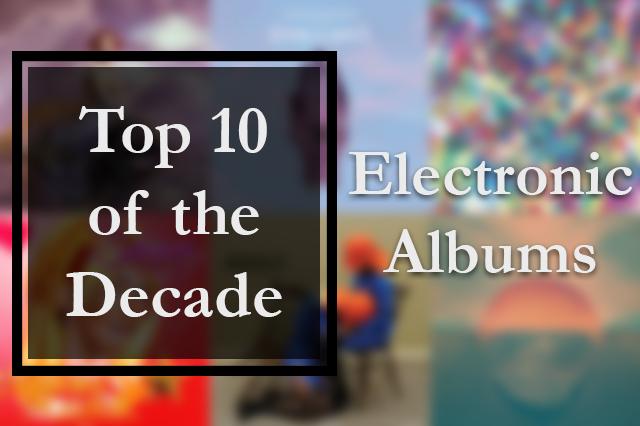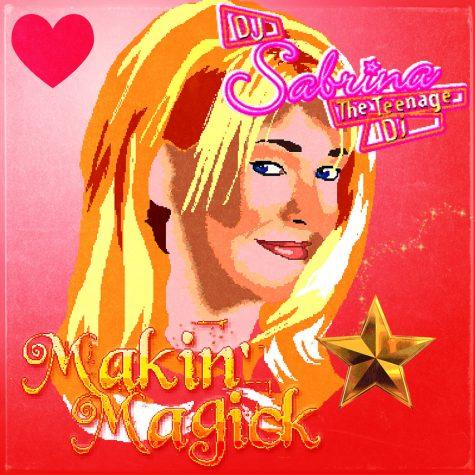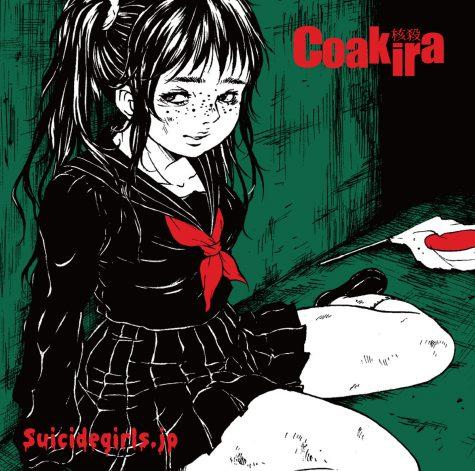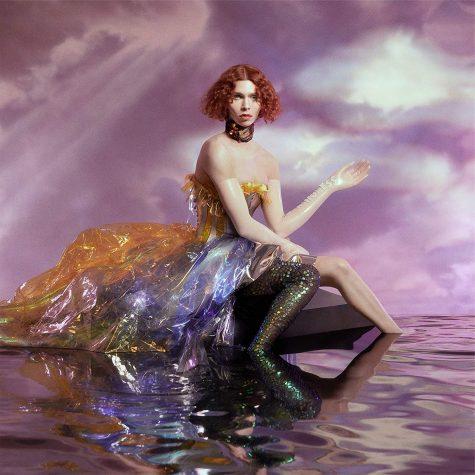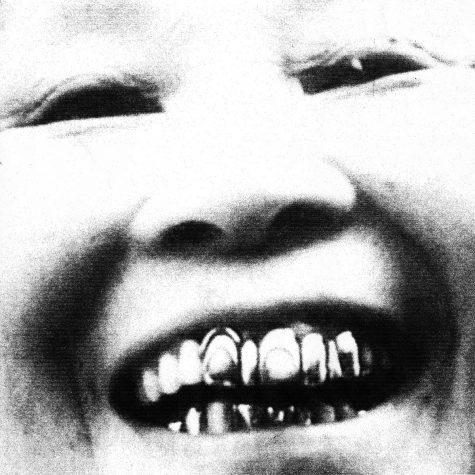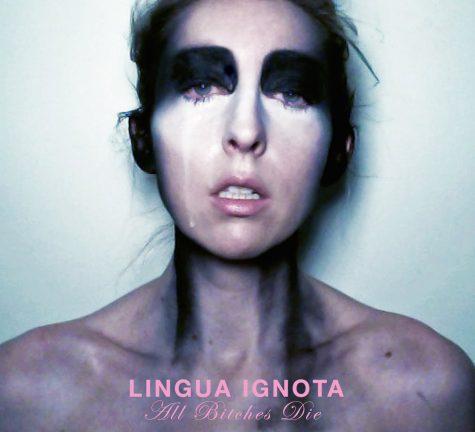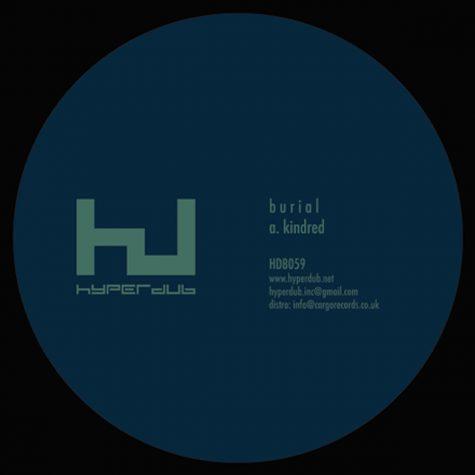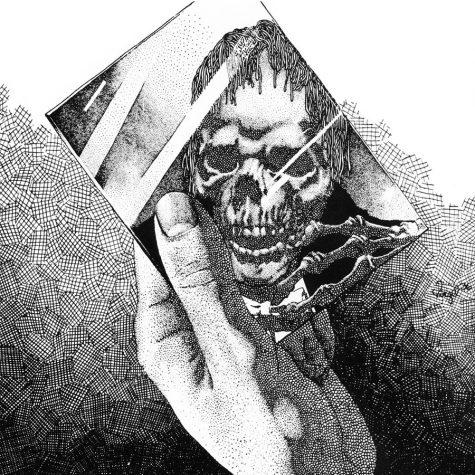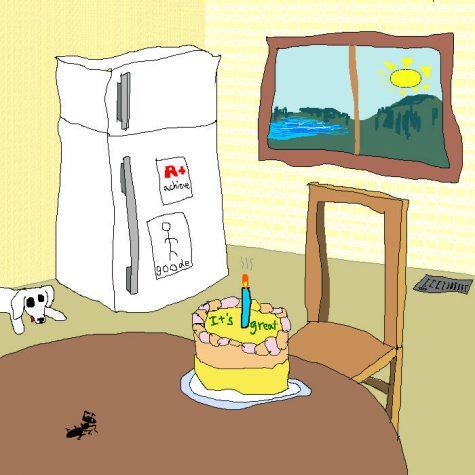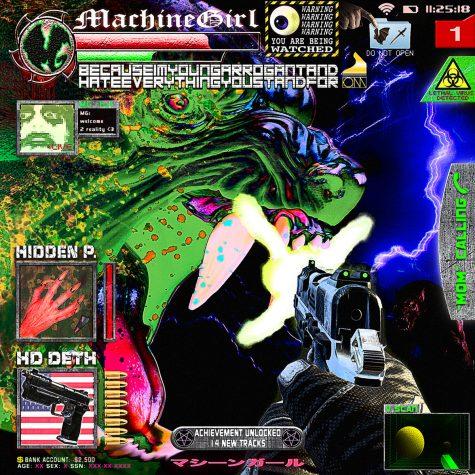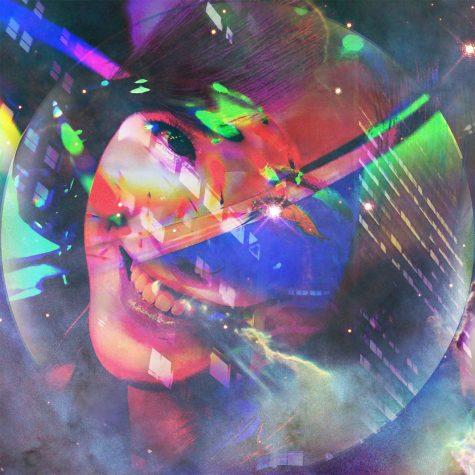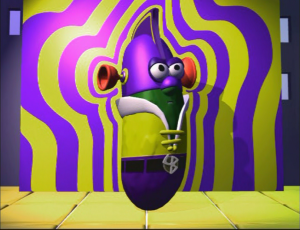Top 10 Electronic albums of the 2010s
The very best of electronic music this decade
January 19, 2020
Depending on what kind of electronic music you’re interested in under the massive umbrella that exists, this decade was either one of the best or one of the worst. Mainstream EDM found its own type of Nu Metal with Brostep, with the likes of Skrillex, Datsik, and Excision making a gritty, noisy type of EDM that would eventually lead to mainstream EDM dulling greatly.
However, the underground blossomed. Vaporwave and Synthwave redefined nostalgia, Outsider House brought DIY punk attitude to a genre nearly devoid of it, Breakbeat and Digital Hardcore resurfaced, PC Music and other affiliates broke down club music and combined it with a Y2K flair. Influences from all over melted together to create millions of unique sounds that can be find all throughout the internet and in small, “technically legal,” venues near you. Here are my top ten records from the last ten years that I think utilized sounds from the present, past, and potentially future, to make some of the greatest works of art ever created.
10. DJ Sabrina the Teenage DJ – “Makin’ Magick” (2017) (Outsider House)
Having an understanding of which Lo-Fi and Outsider House tracks are popular, I was surprised when I had found that there wasn’t a single song from Makin’ Magick by DJ Sabrina (the Teenage DJ) that was making the rounds on YouTube, especially considering how much of a ride every single track is. Throughout the album, while the general sound is Outsider House, it takes into account a multitude of popular House subgenres, underground and mainstream throughout the 2010s, in order to create an incredibly positive, celebratory atmosphere that feels like a graduation from the entire decade. Additionally, it keeps itself grounded in a very nostalgic middle ground between early internet websites, 90s sitcoms and the very familiar, inescapable aesthetic of Vaporwave. The aesthetic gives the whole album a unique sound in terms of aural texture, sampling (which this album utilizes creatively and intensively) and a lo-fi combination of more modern and old-school electronic drums compared to the majority of gloomier Outsider House albums. Though there are some certain highlights like, “All the Beautiful Things U Do,” “Starting Over,” “Great Again,” “Love U Forever,” “It’s Just a Natural Thing,” and, “Freedom,” the entire album is incredibly consistent, especially given the 128 minute runtime, but if you’ve had a long week and want to relax, you’re looking for underappreciated gems from the last decade, you’re a huge fan of the YouTube recommended system’s taste and want to hear the next natural step, or all of the above, I highly recommend you listen to this (practically anonymously made) modern masterpiece of Electronic Dance Music.
9. Coakira – “Suicidegirls.jp” (2015) (Speedcore)
A few years ago, I found out about an… “interesting” genre called Extratone, in which the sole feature is that at least some part of the song will suddenly speed up to 1000 BPM or more, effectively sounding like a Nintendo Wii crashing, bridging a gap between Speedcore and Harsh Noise in the most unpleasant way imaginable. Upon first hearing it, I thought it had to be a joke. I mean, when the bass dropped and the SCREECHES came in, it seemed more like a punchline than something people could enjoy seriously. I dismissed it simply as a novelty, and thought I’d never look back. That was until I peaked behind me and found this gem. Never would I have thought I’d stumble upon an album like Suicidegirls.jp, in which Extratone is framed inside a portrait of high speed, hardcore electronic, alongside influence from Digital Hardcore and the works of Alec Empire, Raggacore, which is an intense, Breakcore version of the Dancehall subgenre, Ragga, and hints of Industrial Metal, with many songs finding a base in heavily distorted guitar chords. Though many of these styles have been tried in the past as far back as the 90s (some overlapping others even then), this album displays all of those in a concise, detailed way that manages to have catchy melodies and rhythms instead of simply destroying your eardrums with noise, even if the album has no shortage of ear-splitters. Coakira’s recent follow-up, School of Death was good as well, but that album’s Hip Hop influence comes to the front too much for it to sound nearly as destructive or powerful. If I could compare this album to anything, I’d say take all of KMFDM from 1989-1997, compress it into thirty-some minutes trimming all of the excess, and once that comes out on an intensity scale of about seven out of ten, crank it all the way up to eleven. That’s this album.
8. SOPHIE – “Oil of Every Pearl’s Un-Insides” (2018) (Post-Club)
This decade, few labels in the underground have made as much buzz and touched with mainstream artists like PC Music. The sound of artists on that label has become well known throughout music communities, taking Pop music, combining it with Bubblegum Dance (Vengaboys, Aqua), Trance (Alice Deejay, The KLF), UK Bass (Iglooghost, Jamie XX), Wonky (Flying Lotus, Rustie), and (in shocking contrast) Post-Industrial (Coil, Einsturzende Neubauten), and using plastic-sounding, clean synths and feminine, often pitched-up vocals, reminiscent of Nightcore to create a bizarre, uncanny valley form of Pop fit for the club. Though many artists like Hannah Diamond, GFOTY, Danny L. Harle, and A.G. Cook (the label owner) have all done wonderful things with the style, none have used it quite as well as label affiliate, SOPHIE, and no release encompasses the full range of her skill better than Oil of Every Pearl’s Un-Insides. Though each song generally varies greatly in mood and sound from the last, making them capable of being viewed as individual pieces, context in the album makes them even more powerful. Starting the album off with the artsy, calm, ambient ballad track, “It’s Okay to Cry,” followed by the demolishing, enraged, and incredibly raunchy, “Ponyboy,” sets the scene perfectly for well-crafted eclecticism in sound and emotion for the forty minute duration of the album. This contrast is shown most greatly between the track “Pretending,” a hypnotic six-minute long dark ambient track with its only lyrics alluding to the dysphoria and lack of confidence its writer may have felt, with “Immaterial,” possibly the most loudly confident and feminine track on the entire album, elaborating on concepts of transcendence and inner peace to describe Sophie’s own experiences. Though this album is lined top to bottom with a variety of wonderful tracks, including, “Whole New World / Pretend World,” a nine-minute long, two part opus with influences from all over electronic music, industrial music, and pop, the track that undoubtedly is my favorite would be, “Faceshopping,” an aggressive, dark, industrial, and ultimately catchy song that lyrically alludes to the problems caused by social media, as well as the struggles transwomen have with the idea of, “passing.”
7. Sd Laika – “That’s Harakiri” (2014) (Post-Club)
Where Oil of Every Pearl’s “Un-Insides” shows the most well-known form of Post-Club that can be expected of PC Music and its affiliates, SD Laika’s take on the concept is much darker, more industrial, and relies MUCH more on bass. In only thirty-two minutes, “That’s Harakiri” destroys absolutely everything in its path, with nearly every track sounding like it almost accidentally came together by means of a glitch. It sounds unstable in the most horror movie-like aspect possible. One thing that I find most impressive is how meticulously the sounds on each song had to be crafted in order to simulate the sound of constant glitching, helping to give the album a visual sound throughout that manages to involve several senses. It’s fortunate that speakers can only project sounds, because if this album had sights, it’d be something to run from. FAST. Where the first track, “Peace,” acts as a cold, unsettling opening to the mysterious and dark setting this album seemingly takes place in, never fully coming into a structure, it transitions seemingly into the most popular track, “Great God Pan,” which builds upon “Peace,” into a massive, percussive ride that would become popular with many of the most acclaimed electronic musicians of all time, including Aphex Twin and Björk. The first time I’d heard those tracks, I’d come across the album by chance and had no idea what to make of them, but even for my formerly untrained ear, “You Were Wrong,” was a clear stand out, holding an atmosphere that combines Power Noise with Grime over complex basslines and a surprising piano sample among the madness that stitches the pieces of this behemoth together.
6. Lingua Ignota – “All Bitches Die” (2017) (Death Industrial)
Lingua Ignota is an artist that’s been able to hold my attention from the start. By combining Power Electronics and Death Industrial Noise music with Darkwave akin to Dead Can Dance, and Classical and Opera in a way that reminds me deeply of Diamanda Galas, though it’s easy to say this has more structure than a majority of releases by her, as accomplished as Galas is an artist. Each song on “All Bitches Die” uses allusions to stories and passages from the Bible to create an unsettling, ritualistic, mournful, and vengeful atmosphere, written from her perspective as a survivor of domestic abuse and rape, effectively acting as furious anthems for those hurt. The four tracks go back and forth, with each one either being loud, noisy, firey, and apocalyptic, or hazy, cold, foggy, and more slowly discomforting. Both of these atmospheres throughout each of the album’s long, winding tracks create a depressive, haunting ambiance from which there is absolutely no escape, until the last track, “Holy Is the Name (Of My Ruthless Axe),” like a light at the end of the tunnel after a sample of serial killer Aileen Wuornos, describes how she murdered the man that looked to rape and kill her. The song paints a heavenly picture in which she lies with the corpses of her rapists, likely a metaphor for overcoming the emotional burden these people have left one her, or it’s just literal and they simply get what they deserve. However, the sound of the song itself makes this grim image seem pristine and beautiful after this journey through her personal suffering and torture. Though her following album, “Caligula,” would boast much more metal influence that would normally be catered towards me, I feel the concise nature of this album feels like a more structured and powerful work of art. As much as I recommend it, this album is definitely NOT for the weak of heart.
5. Burial – “Kindred” (2012) (Future Garage)
Burial has gone from a mysterious, UK label loner to one of the all-time most acclaimed names in all of electronic dance for his absolute masterpiece record, “Untrue,” that paints a unique, melancholy, rainy image of urban UK life through the sound of Dubstep and Hyperdub’s own Future Garage, as well as subtle use of sampling to create distinct, emotional meaning and carefully maintained atmosphere to each song’s driving, catchy drum beat down the middle of the track. Though the follow-up to “Untrue” was technically “Street Halo, Kindred” feels much more like the sequel it deserves. Where “Untrue” was atmospheric to begin with, this takes it up a notch, leaving you capable of drifting away from whatever you might be doing while listening to it. It undoubtedly takes more House influence than any of his prior records did, but he’s capable of mending the generally happy sound into something like an energetic ghost. Across thirty-one minutes, not a single second is wasted, using each moment available to create the atmosphere desired, even when that second might be used solely on ambient sound or silence. Though it may not be the best place to immediately start with UK electronic music, let alone Burial, it feels like a very powerful conclusion to much of what Garage represented as a genre from the late 90s through the 2000s.
4. Oneohtrix Point Never – “Replica” (2011) (Plunderphonics)
Daniel Lopatin, known most famously by his alias, Oneohtrix Point Never, has absolutely been my favorite of the, “Internet Art,” kind of artists that have seen breakthroughs during the 2010s. He’s even credited with having created Vaporwave, the aesthetic of which has gone far enough to witness popular culture to the point that it permeates through popular hip hop, and shirts in Forever 21 are inspired by it. While the concept that would create that genre was used just as advertised on his album, “Chuck Person’s Eccojams Vol. 1,” I feel the concept would be used in a way much more detailed, emotional, and compositionally intriguing on his next album, “Replica.” The album is composed almost entirely from sounds found in commercials from the 80s and 90s, manipulated carefully to create an ominous, looming, depressive, and ultimately thoughtful atmosphere, capable of triggering nostalgia for sounds you may not have heard in your entire life. Where tracks like, “Sleep Dealer,” can be incredibly unconventional and challenging for someone new into music, tracks like, “Power of Persuasion,” and, “Replica,” create an ambient atmosphere that’s not too difficult to be consumed, and can be easy for anyone to find themselves attached to. The latter of which songs one of my friends whose favorite bands were Van Halen, The Beatles, and Metallica would listen to quite a bit, to the point that he would just casually go to play the backing piano part anytime he was around one. While each track can be united under the similar atmosphere, their sounds vary greatly, where songs like, “Andro,” are very ambient and progress slowly, other tracks like, “Child Soldier,” are much more noisy and even aggressive, as opposite this album that seems.
3. PilotRedSun – “Achievement” (2016) (IDM)
Easily, my favorite YouTube account of all time is PilotRedSun. His animations soar far above his peers, starting off simply making poorly drawn animations with references to popular media, his work would break from his peers with his evolving animation, ability to write, and of course, his absolutely wonderful, surreal, nostalgic FM synth music. “Achievement” is an album made up of tracks he’d made from 2012-2014, some of which would make appearances in videos over time. Each song is like a nostalgic experience with straight-faced, bittersweet emotions, with a sound akin to the one Aphex Twin uses on “The Richard D. James Album,” but more inspired by Downtempo and Chiptune, giving it a relaxed, video game inspired, warm ambiance. Tracks like, “Greetings,” “Bodybuilder,” “Sadpad,” and, “Warsaw,” all provide perfect examples of this consistent tone throughout its forty-five minute duration. It’s an album of very few words, even among other albums that are exclusively instrumental. Each track name is only one or two lowercase words, and I couldn’t see it any other way. There are such a plethora of emotions across this album that I’m not sure some of the greatest poets could even express in words. The less words used, the better for a piece like this. Don’t let the lack of words, or even discussion, keep you from going to this one. I cannot recommend this album enough to anyone that’s been on the internet for a good amount of time growing up. There’s just something here that no album in any other genre can truly replicate. For being so simple and straightforward, there’s something very emotionally complex about this album.
2. Machine Girl – “Because I’m Young, Arrogant, and Hate Everything You Stand For” (2017) (Digital Hardcore)
Machine Girl is an artist that already left a strong impression on me with their YouTube famous debut album, “WLFGRL,” which looked to join in on the remarkable Breakbeat Hardcore revival scene, but it took me until I heard “Because I’m Young, Arrogant, and Hate Everything You Stand For” to realize that Machine Girl is one of the greatest artists not only of the decade, but of all time. The whole album hearkens back to the sound of Atari Teenage Riot, but does so in a way that invites a plethora of modern influences that make it shine as truly unique. Each track feels just like the cover: absolute insanity from every direction, and I say that in the best way I possibly can. Picking apart the detail in each song is incredibly gratifying though, as it feels like every track gains more meaning every time I hear it. Additionally, the questions raised in the lyrics (if the lyrics I’ve been able to find are right that is; this album doesn’t have one set of confirmed lyrics) related to personal struggles with sexuality and paranoia, as well as the calls to action against oppression from the government and older generations makes it clear to me that digital hardcore was the logical progression to punk to begin with, especially when there are so few memorable and innovative punk bands within recent memory. Songs like the title track, “Fuck Up Your Face,” “Vomit,” “Bitten Twice,” “うずまき,” and, “MCHNGRL vs. WLFGRL,” are perfect examples of the enraged, aggressive tone this album carries, and while they are some of my favorites, this album is incredibly consistent, never fluctuating far in quality, and maintaining damn near perfection throughout. If you’re into punk or rave music of any kind, please do yourself a favor and blow your eardrums out with this magnificent album.
1. Death’s dynamic shroud.wmv – “I’ll Try Living Like This” (2015) (Vaporwave)
Vaporwave has always been a controversial genre among people, and I’d say for fair reason! There’s a lot to question about a genre most well-known for people simply taking a short sample from old music, looping it, slowing it down, and pitch shifting it. A group that has undoubtedly been an outlier to these kind of discussions are death’s dynamic shroud.wmv, a group of three of the best artists in Vaporwave and related genres. While the three were responsible for a whopping eleven albums, each of varying quality, it was clear through a select few of those albums that there was something brought to the table sonically and conceptually that no other artist in the genre was doing. This would be fully realized when they would finally sit down and take their time with music, leading to the creation of their masterpiece, “I’ll Try Living Like This.” The album consists of samples from all over, including video games, pop, funk, rock, hip hop, and electronic music dating back decades, all the way to the present, anime, live-action TV, film, and seemingly even organically produced music, uncommon of most Vapor artists. It’s all seamlessly melted together to make an atmosphere that’s equal parts engulfing, human, and emotional, as well as disturbing, robotic, and cold. Where some of the songs have danceable qualities to them, despite their ominous, looming nature, in the context of the album they’re far more powerful, carefully creating an image that I personally believe reflects the world around us. Though there are many interpretations about what this album might be about, I believe it’s rather obviously a statement on the treatment of the impoverished and homeless. The first track features a slowed sample of Kim Kardashian’s character in CSI: NY describing homeless people, saying, “They’re a cancer, living in the street like dogs.” Additionally, I feel like the ending of the chilling track, “CD Factory / 드라마,” which includes what sounds like a sample of a character in some kind of drama dying, backed by the heavily reverberated sounds of an audience clapping behind it, could be symbolic of the deaths of the impoverished. No matter what the meaning is, the way this album is able to take a multitude of types of electronic music popular in the 2010s that are often criticized for lacking artistic intent or emotion and use them to form a deeply contrasting tone between heartfelt and unsettling feels like something that has only been done with music a handful of times prior, but I don’t believe any have ever come close to as powerful as this album is. I would like to say there are individual tracks you could attempt to try before diving into this album, but there’s a feeling that listening to this album straight through for the first time gives that I certainly wouldn’t like to spoil. If you really must listen to an individual track beforehand, there’s a great music video on YouTube for, “너 땜에 맘이 맘이 맘이 맘이 괴로워요.” No matter what genres you’re into, I think there’s at least SOMETHING you can find remarkable in this album, but if you’re already into Vaporwave or internet art in any way, you’ll see why this is a masterpiece of modern music, and my clear pick for the greatest electronic album of the 2010s.



